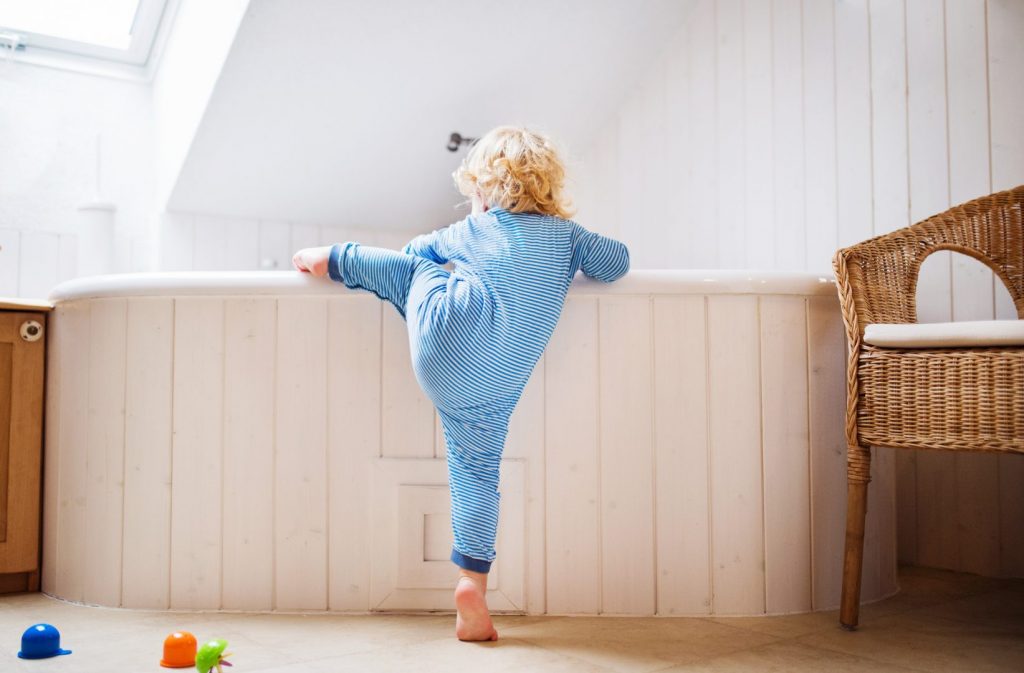
Bathroom safety is not just for adults or seniors although falls are especially problematic as we age – children need to be considered as well
The month of January has been designated as National Bath Safety Month, but how do we instill everything we want people to be aware of as far as remaining safe in their bathrooms in just a month’s time? Seems like we should have a least a year devoted to this critical pursuit.
Bathroom safety is an everyday pursuit. Selecting an entire month to focus on it – and the first month of the year at that – shows just how important it is. Nevertheless, after this month is over, and there are other named observances for the weeks and months to follow, the topic of bathroom safety might wane. It shouldn’t, but it’s possible. It needs to be a constant emphasis.
Bathroom safety is important for so many reasons, from staying alive and out of the hospital to just enjoying one’s living space. It’s not limited to any age, but seniors are more vulnerable to injuries with weaker bones and often declining balance and eyesight.
Bathroom falls account for many emergency room visits – nearly one-quarter of a million each year according to the Center for Disease Control & Prevention (CDC). This means a disruption in people’s schedules, time away from home while the injuries are being treated to even longer if a hospital stay is required, and possibly even a fatal episode. Bathroom injuries are nothing to be trivialized.
There are many reasons for bathroom injuries being as potentially serious as they are. First, all of the surfaces are extremely hard and unforgiving. The sink, toilet, tub, and usually the floor are quite hard and solid. Our bones are no match for the unyielding hard nature of these bathroom objects.
Second, the floor is often slippery because it is wet (or our feet are). A small slip on a tiled bathroom floor typically is more dangerous than a slip in another part of the home because there is less space to recover one’s balance, remain upright to avoid the fall, and refrain from contacting these hard surfaces than there is elsewhere in the home. Inside the tub or shower, the floor of that fixture is wet after using it and often has soap residue – making it even slipperier. When there is a tub wall or a curb to climb over to enter that wet area, falls can happen.
Third, bathrooms, especially in older homes, are often small so there is a minimal amount of floor space anyway in which to maneuver. When we bump into an object or slip on the bathroom floor or the floor of the shower, there is very little space as leeway to avoid running into a stationary object.
Fourth, we often aren’t alert. We visit the bathroom in the middle of the night with our eyes trying to adjust to the darkness or minimal lighting and being careful not to wake ourselves up completely so that we can go back to sleep. We use the bathroom in the morning after we awaken – still partially asleep in some cases and sometimes without our eyeglasses on for those who need them. We use the bathroom when we are getting ready for bed, and sometimes are quite drowsy or sleepy. Other times, we are distracted as we are getting ready for an appointment or hurrying to keep a schedule.
Age, illnesses, and medications can contribute to being dizzy, unsure on our feet, lightheaded, or otherwise more prone to misstepping, slipping, or falling in the bathroom. This is why having safety bars (grab bars, assists, or other names used to describe them) near the entrance to the tub or shower and inside the wet area are a good idea – for everyone. A built-in shower seat or bench or a folding shower seat is similarly a good idea. We might not realize the importance of being able to sit or rest to keep from falling or losing our balance.
When these devices are installed, we need to use them to the point that they become second nature – just like remembering to turn off a light switch when leaving a room or snapping our seat belt when getting into our car or sitting on an airplane seat. It does little good to have a strategic grab bar at the entrance to our tub or shower (or inside the space also) if we forget that they are there or have to consciously look for them when we slip. It likely will be too late at that point. It needs to be an immediate response from muscle memory as to where it is and that it is there for us to use.
When children are present in the home – because they still live there or they are visiting their grandparents – bathroom accidents can happen from ingesting the contents of materials they should not have access to or from climbing onto objects.
Bathroom safety is an all-the-time, all-out pursuit.
